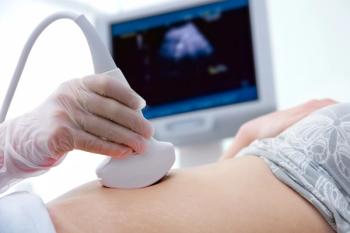
Katherine Perslev discusses reduced wound complications from prophylactic antibiotics
New research shows that a single prophylactic antibiotic dose lowers clinically relevant wound complications after second-degree tears or episiotomy.
In a recent interview with Contemporary OB/GYN, Katherine Perslev, doctoral student affiliated with Herlev Hospital, discussed new evidence regarding the risk of wound complications following vaginal delivery and the potential benefits of prophylactic antibiotics for women with second-degree perineal tears or episiotomies.1,2
She began by highlighting a key challenge: despite how common perineal repair is worldwide, the true rate of wound complications remains uncertain. A systematic review conducted by her team found complication rates ranging from 0% to 30%, a wide interval largely influenced by how and when complications were assessed.
Studies relying on registry data reported lower rates, whereas those conducting clinical evaluations within 1 to 3 weeks postpartum identified significantly more complications. In Perslev’s own REPAIR study, 17% of women who did not receive antibiotics developed clinically relevant wound complications, underscoring that “normal” obstetric tears often involve more morbidity than previously recognized.
Perslev described outcomes from a randomized controlled trial of 442 women who received either prophylactic oral antibiotics or placebo after episiotomy or second-degree tears. Although a broad definition of wound complications showed a nonsignificant overall reduction, clinically relevant complications dropped from 17% in the placebo group to 9% in the antibiotic group, which was a statistically significant reduction.
Women who received antibiotics also reported better subjective health, needed fewer additional antibiotic prescriptions, and required fewer extra follow-up visits. Importantly, no increase in side effects was observed between the groups.
Sub-analyses revealed that the benefit of antibiotics persisted even among women without typical high-risk features such as episiotomy, instrumental delivery, or high body mass index. These findings, combined with data from the ANODE trial in the United Kingdom—which demonstrated reduced wound complications following a single IV antibiotic dose for instrumental deliveries—support broader consideration of prophylactic antibiotics in postpartum perineal repair.
Perslev noted that her department in Denmark has already implemented shared decision-making about prophylaxis as standard care, while emphasizing that institutions must consider local obstetric practices, bacterial environments, and resistance patterns. Looking ahead, Perslev’s team plans to evaluate how clinically relevant wound complications affect women 1 year postpartum, including outcomes such as continence, prolapse, sexual health, and body image.
Another priority is refining definitions of wound complications, as the current literature lacks consistency. The REPAIR study used both a broad definition and a more targeted, clinically relevant definition; future work aims to identify a practical, standardized cutoff that can be applied in research and clinical practice.
Perslev closed by stressing the surprising frequency of wound complications and the need for greater attention to this understudied yet extremely common surgical issue in obstetrics.
No relevant disclosures.
References
- Antibiotics linked to lower risk of complications after obstetric tear. BMJ Group. October 29, 2025. Accessed October 31, 2025. https://www.eurekalert.org/news-releases/1103450.
- Perslev K, Klarskov N, Bergholt T, Jango H. Risk of infection and wound dehiscence after use of prophylactic antibiotics in episiotomy or second degree tear (REPAIR study): single centre, double blind, placebo controlled randomised trial. BMJ. 2025;391:e084312. doi:10.1136/bmj-2025-084312
Newsletter
Get the latest clinical updates, case studies, and expert commentary in obstetric and gynecologic care. Sign up now to stay informed.















